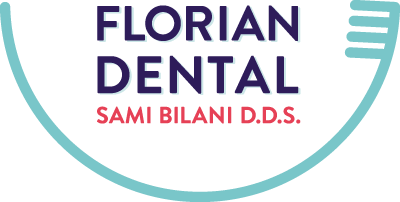As we become older, our arteries lose some elasticity and stiffen. This can lead to a progressive condition referred to as arteriosclerosis (hardening of the arteries). These stiffened arteries become clogged with fatty plaque. In arteriosclerosis deposits are composed largely of calcium. In atherosclerosis deposits consist of fatty substances, and artery walls lose their elasticity and harden.
Both conditions have about the same effect on circulation, causing high blood pressure and leading to angina, heart attack, stroke, or even sudden cardiac death.
Although arteriosclerosis causes high blood pressure, high blood pressure can also cause arteriosclerosis. Calcium based and fatty deposits basically form in areas of the arteries weakened by high blood pressure and strain. The narrowing of the arteries makes blood pressure go even higher. As the arteries become less pliable and less permeable, cells may experience ischemia (oxygen starvation) due to the insufficient circulation. The fatty plaques can be either stable or unstable. Unstable plaque allows particles to break away and cause further blockage downstream, in the smaller vessels, so it’s of more immediate clinical importance.
If one of the coronary arteries becomes obstructed by accumulated deposits or by a blood clot that has either formed or snagged on the deposits, the heart muscle will be starved for oxygen, and individual will suffer a heart attack (myocardial infarction MI or coronary occlusion). When arteriosclerosis occludes the arterial supply of blood to the brain, a cerebrovascular accident, or stroke occurs.
Older people are at a greater risk of arteriosclerosis. 20 percent of American population over sixty five affected by arterial disease.
Major risk factors for arteriosclerosis: smoking, family history, hypertension, diabetes, or abnormal cholesterol level.
Peripheral atherosclerosis is a type of peripheral vascular disease in which the lower limbs are affected. In the early stage the major arteries carrying blood to the legs and the feet become narrowed by fatty deposits. Atherosclerosis of the leg or the food can limit a person’s mobility, but also can lead to a loss of a limb. People who have diseased arteries in the leg or the foot are likely to have them elsewhere, mainly in the heart or brain.
Pain in the legs (most often in the calf, but sometimes in the foot, thigh, hip, or buttocks) brought on by walking and quickly removed by rest is called intermittent claudication, and it is the first sigh of developing peripheral atherosclerosis. Additional symptoms include numbness, weakness, and a heavy feeling in the legs. These symptoms occur because the amount of oxygenated blood passing through the plaque-clogged arteries is insufficient to meet the needs of the exercising leg muscle.
Peripheral Artery Function Self Test
A simple test can determine how well your blood flows through the arteries of your legs. There are three areas on the lower leg where a pulsating artery can be felt by lightly touching the skin covering the artery. One spot is the top of the foot, the second spot is the inner aspect of the ancle, and the third spot is behind the knee.
Apply pressure lightly to the skin on these spots. If you cannot find a pulse, this is an indication that the artery supplying the leg may be narrowed. You have to consult your health care provider.
According to Prescription for Nutritional Healing, Nutrients essential for people suffering from arteriosclerosis and atherosclerosis:
- Calcium and magnesium needed to maintain proper muscle tone in the blood vessels;
- Coenzyme Q10 improves tissue oxidation;
- Essential fatty acids reduce blood pressure, lower cholesterol level, help maintaining good elasticity of the blood vessels;
- Multivitamin and mineral complex is needed for protection;
- Vitamin C acts as a free radical scavenger.
These herbs are helpful with the arteriosclerosis: cayenne, chickweed, and hawthorn berries. Ginkgo biloba can improve circulation increasing the oxygen flow to the arms, legs, heart, and brain. Green tea lowers cholesterol level. Japanese researchers recommend also black tea to lower a rate of lipoprotein oxidation, a chemical reaction that makes fats in the blood more likely to be deposited in the arteries. Garlic has a lipid regulating effect. Grape seed extract is probably the best natural free radical scavenger.
Recommendations for people suffering from arteriosclerosis and atherosclerosis :
- Eat high-fiber foods that are low in fats and cholesterol. Fruits, vegetables and grains are your best choice.
- Eat plenty of food containing vitamin E to improve circulation: green leafy vegetables, legumes, nuts, seeds, soybean, wheat germ, whole grains.
- Eat plenty of food containing omega-3 fatty acids: cold water fish, fish oil, canola oil, flaxseed oil, walnut oil.
- Use only pure cold-press olive oil or unrefined canola oil. Do not heat them.
- Avoid eating any candies, cookies, chips, fried food, gravis, junk food, high-cholesterol food, ice cream, processed food, red meat, saturated fat.
- Maintain a healthy weight.
- Get regular moderate exercise. A daily walk is good.
- Monitor your blood pressure.
- Do not smoke and avoid exposure to secondhand smoke. Cigarette smoke contains large amounts of free radicals, many of which are known to oxidize low-density lipoproteins, making them more likely to deposited on the walls of the blood vessels.
